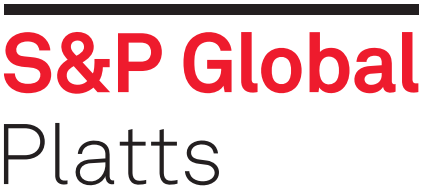The sentiment in the European coils market hinged on hopes that a global semiconductor chip shortage will ease in first quarter 2022, resulting in higher prices for steel producers who have resorted to discounts due to weak automobile production.
The European coils industry endured a tumultuous 2021, from material shortages leading to record-breaking prices, followed by a slump in steel demand from the automotive sector that derailed the domestic market.
North European hot-rolled coil prices ended the year at Eur922/mt, following record-breaking June prices at Eur1,190/mt ex-works Ruhr. HRC Italian prices also hit a record in June at Eur1,145/mt ex-works Italy, but have since declined by Eur309/mt to Eur836/mt.
Heading into 2022, following two unprecedented years of production cuts, ramp ups, record lows and highs, two issues are likely to determine supply and demand in the spot market: material uptake by the automotive industry and the fate of trade barriers, such as import quotas and anti-dumping duties on steel imports into the EU.
Automakers relinquish steel volumes
Global automotive manufacturing demand and production has fallen since September following severe steel shortages during spring and early summer, as the chip shortage worsened. Steel inventories piled up because previously agreed auto volumes were returned.
Some European mills were funneling available steel volumes for exports, while others were confident that peripheral sectors, including heavy machinery and construction industries, would be able to absorb the surplus.
“The cancellation of orders by automotive has forced EU mills to try and move volumes to export markets in order to not contaminate domestic prices,” a European mill source said.
A German mill source said they were bearish on spot price development early 2022.
“I expect the price to be under pressure in Q1 still. Auto is still weak,” the source said. “There are gaps in orderbooks, but it won’t force a price erosion.” The supply chain was likely to get rid of the excess stocks before significant buying resumes, according to the source.
In December, some automakers said they were confident about the chip shortage easing between Q1 and second half 2022, raising steelmakers’ hopes for volume gains.
“There are positive signs — hopeful signs for automotive,” a UK trading source said. “The only concern is, although there’s a backlog of two million cars, there isn’t much of an order book beyond that.”
EU car output increased by just 3.1% in the first three quarters of 2021 to reach 7.6 million cars built, which was 3 million units lower than the pre-pandemic volume in 2019, data from the European Automobile Manufacturers Association (ACEA) showed.
“Auto is going to call up more volumes. Service centers have to ship a lot in January so their stocks will shrink,” a second mill source said.
2022 automotive contracts sealed
Long-term auto contract negotiations were already in full swing as spot prices declined, following lower uptake at automakers through second half 2021.
Discussions had stalled as mills tried to achieve Eur1,000/mt and above for HRC and Eur1,200/mt for hot-dipped galvanized steel, while automakers kept a meticulous watch over spot price development and raised the stakes for negotiation.
HDG 2022 contract prices settled at Eur1,200-1,250/mt delivered Europe toward end-Q4, and around Eur1,000-1,050/mt delivered Europe for HRC.
A European mill source said their Q1 outlook was focused on securing March orders with a “much better view” on automotive demand. The source said several automakers had already announced additional work shifts due to easing chip shortage.
“Auto has been low during the last quarter and it hit the mills — auto represents 20% of total production. That happened, but it’s over now,” the source said.
EC reviews steel import safeguards
The European Commission’s periodic review into its steel import safeguard measures, which will also assess changes in the US Section 232 tariffs Jan. 1 and its effect on steel trade flows, has been advanced from an expected February or March 2022.
Market participants will have until Jan. 10 to submit opinions on the current safeguard measures and the Section 232 changes. The commission will also assess whether a 3% annual increase in liberalization under the current safeguards is justified.
“I think the safeguard review being pulled forward is also going to help stop the decline [in prices]. There’s no need for anyone to push now,” the UK trader said.
‘Other countries’ steel quota to determine prices
Market participants in Southern Europe said the HRC steel import quota for ‘other countries’ in April 2022 could determine the direction of Italian prices, as inflows from India and Turkey will likely take advantage of the spare capacity in that quota.
“From April, we’ll be able to enter into ‘other countries’ quota, so we could be helped in this way,” an Italian service center said.
A second service center source said the wide array of import options would become more “relevant for setting pricing in Q2.”
Concerns about an eventual exhaustion of the import quota would be offset by a Section 232 tariff decision and an increase in Q1 automotive demand, a mill source said.
“Mills have the door open to the US, where prices are far higher, so this will offset lower import prices,” the source said. “If you look at Q2, European availability still has good tonnages that could be delivered to the States. Nobody considers this part of the demand.”
Worries about import duties, quota restrictions and anti-dumping investigations still make imports a risky option for buyers.
Market chatter about an anti-dumping investigation into HDG imports from Turkey and Russia had participants anticipating possible provisional measures coming into effect end-January 2022.
— Amanda Flint, Laura Varriale






